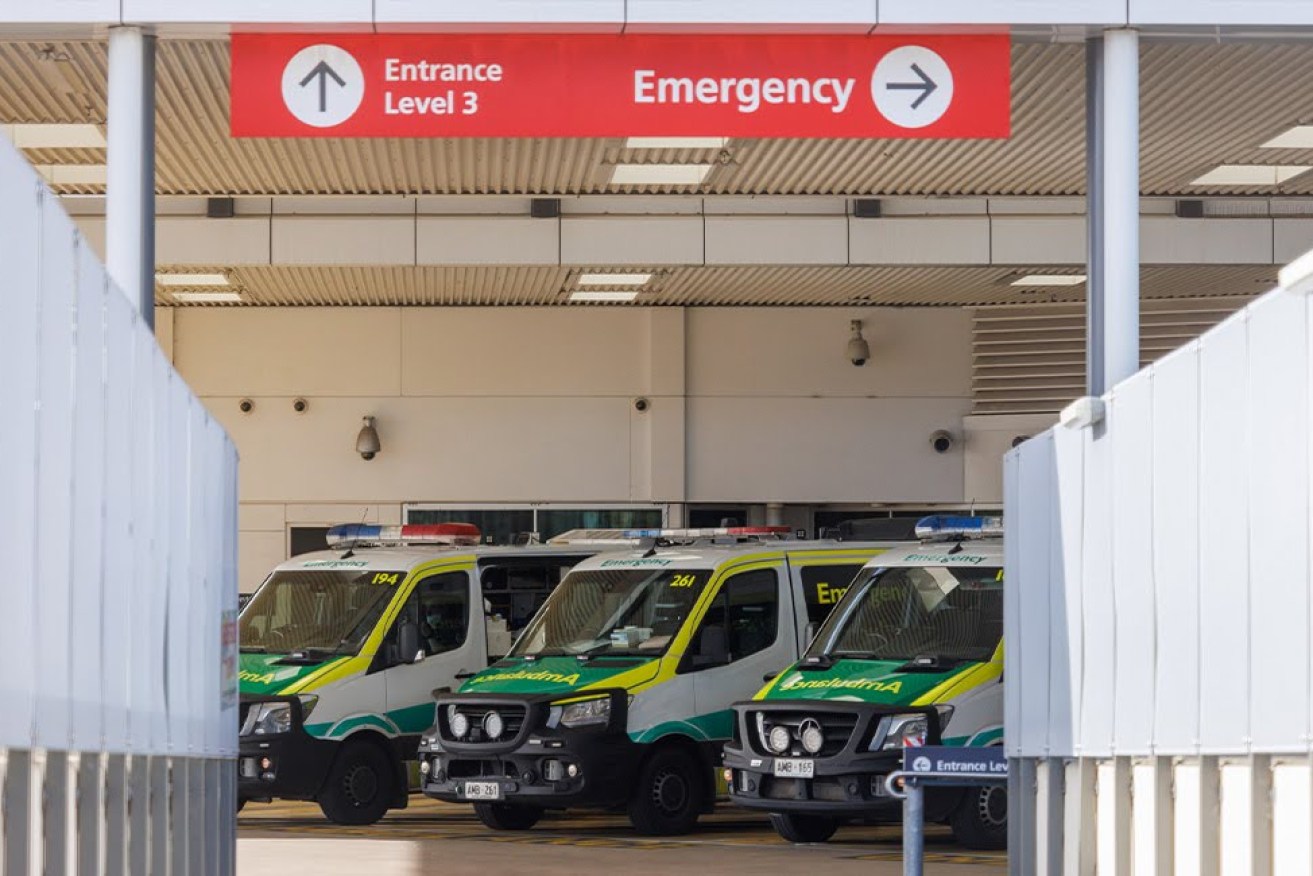Hospital relief unlikely until end of next year: Picton
South Australia’s hospital system will continue to experience “difficulties” until 150 more emergency department beds are opened by the end of next year, Health Minister Chris Picton says, after ambulance ramping hit a new record high last month.

Photo: Tony Lewis/InDaily
Picton said this morning that while the government hoped that the health system “gets better” as fast as possible, more beds needed to first be made available across hospital emergency departments.
Another 150 beds are planned to open by the end of next year, after 26 more acute inpatient beds were opened at Flinders Medical Centre earlier this month.
“I think that we will continue to see difficulties in our health system until we bring in that extra capacity and 150 beds coming online by the end of next year,” Picton told ABC Radio Adelaide this morning.
“That’s what we need to make a difference.”
The government released figures on Wednesday afternoon showing that in March, patients spent a record 3968 hours – the equivalent of 165 days or more than five months – waiting in ambulances ramped outside hospitals due to a shortage of emergency department beds.
That was a 30 per cent increase from February, when patients spent 3036 hours ramped outside hospitals.
Ambulances last month spent the most time ramped outside the Royal Adelaide Hospital – 1277 hours (up from 306 hours in February) – followed by Flinders Medical Centre – 1101 hours (up from 317 hours in February).
Only the Women’s and Children’s Hospital experienced a decrease in ramping hours.
The time ambulances took to reach patients also increased over March, with only 60 per cent of the most urgent priority one cases attended to on time – down from 63 per cent last month.
At the same time, there was a 14 per cent increase in the most serious presentations (categories one and two), compared to February.
The government said it would roll out a range of new actions to improve the flow of patients through emergency departments and reduce ramping.
Those actions include conducting weekly audits of long-stay patients in metropolitan hospitals, increasing the use of private hospitals for private patients, having SA Ambulance Service staff and general medicine teams based in emergency departments and appointing “ramping clinical leads” within SA Health.
In a statement this morning, the Ambulance Employees Association (AEA) said it was “disappointed” to see ramping hours increase to 3968 in March, describing the figure as being equivalent to 11 ambulance crews ramped each day for their entire shift.
“This continues to be a difficult nut to crack and, despite significant efforts being made to bring ramping down to a manageable level, there is obviously a need to do even more,” the union said in a statement.
“The AEA will continue to advocate for what is needed and to highlight concerns where deficiencies in the system put patients in the community at risk.
“In stark contrast to the previous government, the current government are being open and transparent about the extent of the problems, and are receptive and responsive to constructive suggestions, and are actively working with Ambos to find durable solutions to the ramping problem.”
The AEA and it’s members are disappointed to see the hours lost to ramping increase in March. Despite significant efforts being made to bring ramping down to a manageable level, there is obviously a need to do even more.
Read our full response https://t.co/fL1l5TKDjW pic.twitter.com/1KoxIibhmE
— Ambulance Employees Association (SA) (@aeasa1981) April 6, 2023
Multiple “code white” alerts were declared across metropolitan hospital emergency departments in March – meaning all their treatment rooms were in use and the hospitals were operating above official capacity.
On one night, the SA Salaried Medical Officers Association was called in to inspect a “gridlocked” Flinders Medical Centre emergency department due to safety concerns.
The SA Ambulance Service told InDaily last month that the service had seen an increase in respiratory illness ahead of the cooler weather, but it had also continued to see a small number of calls which weren’t necessarily an emergency.
“There’s no spinning that March was a very difficult month for our health system,” Picton said today.
“We’re still essentially operating the health system that we inherited a year ago.”
But Opposition health spokesperson Ashton Hurn said the government’s “blame game” was “wearing extraordinarily thin”.
She said the March ramping record was “extraordinarily concerning” as winter approaches.
“I think that one of the primary priorities for the Government should be to accelerate the release of the winter demand plan,” she said.
“We know that it’s going to be an extraordinarily challenging winter.”
The government plans to release its “winter demand strategy” for the health system next month.




